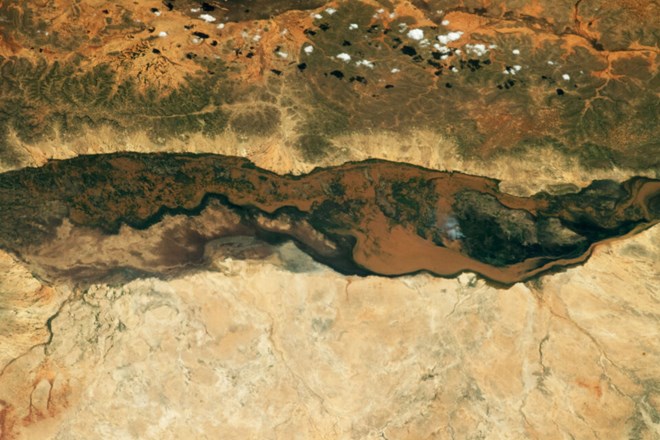Earth.com
ByChrissy Sexton
Wednesday April 19, 2023

Today’s Image of the Day from NASA Earth Observatory features floodwater rising along the banks of the Shabelle River near the Ethiopia-Somalia border. The river runs from the Ethiopian Highlands across Somalia to the Indian Ocean.
After nearly three years of severe drought in the region, heavy rains in March 2023 led to deadly flash flooding that claimed dozens of lives and impacted more than 300,000 people in Ethiopia and Somalia.
“In the first 25 days of March, parts of Ethiopia received 5 to 10 centimeters (2 to 4 inches) more rain than is usual for the period, according to a report from Crop Monitor,” says NASA.
“The Crop Monitor is part of the Group on Earth Observations Global Agricultural Monitoring Initiative (GEOGLAM), which uses satellite data and modeling to produce early warning reports for food shortages. The above-average rainfall ushered in an early start to the long (or gu) rains, which are in March, April, and May in Eastern Africa. The long rains typically contribute up to 60 percent of the total annual rainfall to the Horn of Africa and play a big role in agricultural productivity.”
Caroline Wainwright, a climate scientist at Cardiff University, explained that the long rains normally begin in Kenya and move north to Ethiopia and Somalia. “But this year, the rains started concurrently, and the last two weeks of March were incredibly wet in all three countries,” said Wainwright.
The rainfall in the Ethiopian highlands caused flash flooding along the banks of the Shabelle and Juba rivers. According to the United Nations Office for the Coordination of Humanitarian Affairs (UN OCHA), homes, schools, and health facilities were destroyed along the river banks in southern Somalia and eastern Ethiopia.
The photograph was captured by an astronaut on the International Space Station on April 1, 2023.
Image Credit: NASA Earth Observatory
–—
By Chrissy Sexton, Earth.com Editor